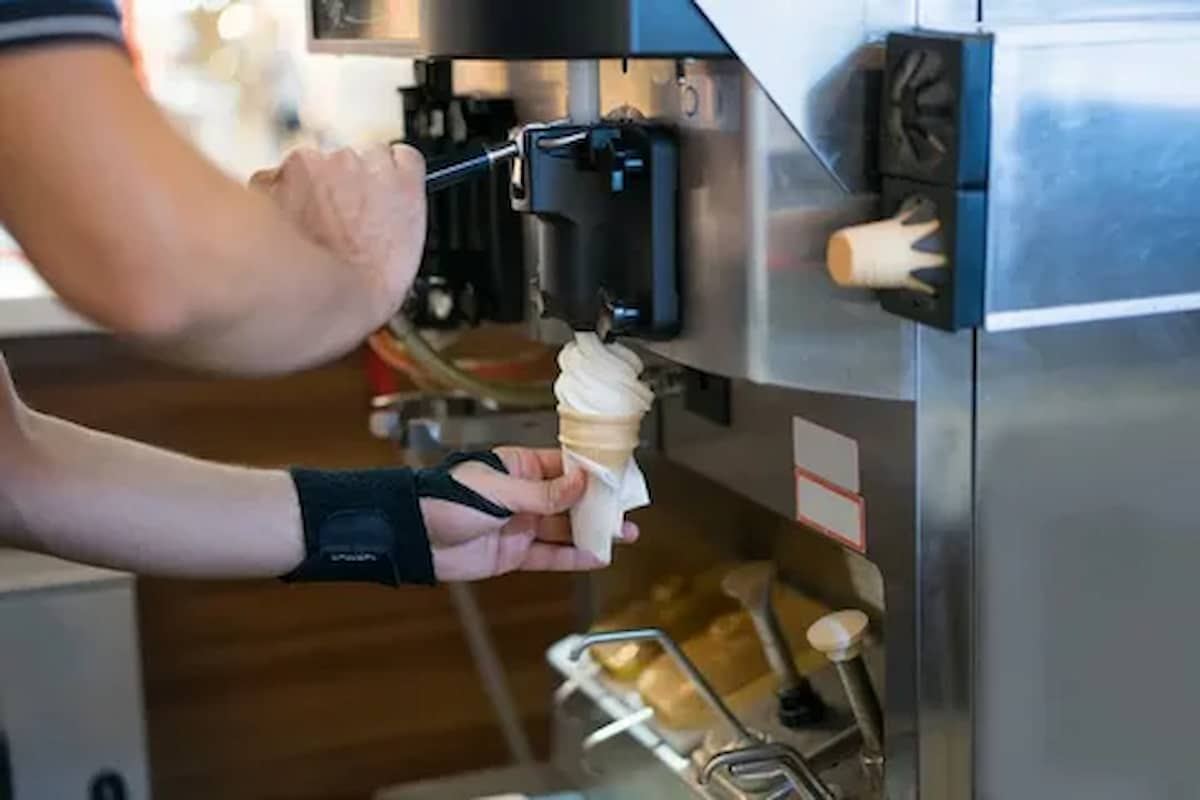


Indulge in creamy, delicious ice cream made with premium ingredients — the perfect treat to cool down, satisfy your sweet tooth, and enjoy any time of day.
Good care and cleaning of a commercial ice cream maker is essential for food safety, product consistency, and machine lifespan. Regular attention saves costly fixes, guarantees peak performance, and prevents bacterial infection. Although with less rigorous procedures, the same basic ideas apply to smaller units like a Soft Ice Cream Machine for Home as well as commercial units needing extensive disinfection plans. From daily cleaning practices to occasional deep sanitising, this manual lists eight fundamental maintenance steps. Using these techniques, companies may keep hygiene levels, prolong equipment life, and constantly offer premium frozen treats.
Commercial machinery has to be thoroughly cleaned after every use to avoid ingredient buildup. Start by turning off and dismantling removable parts—hoppers, dashers, and dispensing valves. To get rid of dairy residues, wash with warm, soapy water using a soft-bristle brush. Before using the food-grade disinfectant, rinse very well. A light detergent solution should be used to clean external surfaces. This everyday schedule sustains operating effectiveness and prevents bacterial development.
Complete disassembly of interior mechanisms is part of a thorough weekly cleaning. Soak all components in a commercial cleaning solution meant especially for ice cream gear. Pay especially attention to the freezing cylinder and inside seals, where debris collects. To avoid problems brought on by moisture, scrub all surfaces with suitable brushes before washing with pure water and let components dry completely before rebuilding.
Regular bearing, gear, and other moving part lubrication lowers abrasion and friction. Only use manufacturer-approved, food-grade lubricants lightly applied to specified locations. Too much oil can pollute the product; too little causes early part failure. Refer to the equipment handbook for specific lubrication points and recommended schedules.
Every week, examine all rubber seals and gaskets for indications of damage or wear. Temperature changes, mixture leakage, and maybe contamination result from damaged seals. Replace worn parts straight away using manufacturer-specified ones. Having spare seals available helps to reduce operating downtime should replacements be required.
Monthly (or more often in harsh water regions), follow manufacturer directions using a commercial descaling solution to eliminate all chemical traces following descaling. Water’s mineral buildup influences product quality and freezing efficiency. This maintenance stops part deterioration and keeps heat transmission efficiency.
Monitor refrigerant performance often. Inconsistent freeze temperatures or continuous running might point to refrigeration problems needing expert attention. Under no circumstances try to handle refrigerant without proper authorisation. Regular expert maintenance guarantees the best cooling performance and helps to avoid major system failures.
Prepare machinery for storage with a full cleaning and drying for seasonal operations. Store in a temperature-controlled environment after disconnecting power. Remove any perishable ingredients and think about using protective coverings. Appropriate storage prevents corrosion and guarantees ready operation when required.
To guarantee ideal airflow and freezing effectiveness, commercial ice cream machines with air intake systems need regular filter maintenance. Clogged filters cause the compressor to labour more, thereby raising wear and power use. Monthly or more often in dusty situations, clean or change air filters. Gently rinse machines with washable filters with warm water and gentle detergent, then let to dry thoroughly before reinstallation. This basic maintenance activity can greatly increase the lifetime of your refrigerator parts as well as improve freezing consistency. For correct filter access and changing techniques, always consult the handbook of your particular model.
The electrical connections, cables and parts should be continuously monitored for wear or damage, particularly for any connection that has any looseness, or if any cables are frayed or show signs of corrosion on contacts, amongst other damage. Make sure that the entry point of the power supply cord into the appliance is free of damage and entanglement. Ensure that all electrical panels are kept clean and dry, using compressed air to help limit dust buildup that can lead to overheating.
Careful cleaning and maintenance of business ice cream equipment protects product quality and equipment expenditure. Establishing strict daily and weekly schedules helps avoid operational problems while ensuring compliance with food safety standards. Businesses can guarantee dependable performance, extend equipment life, and always provide premium frozen desserts to clients by putting into action these complete care practices. The effort put into correct maintenance pays off in lower repair expenses and constant product quality.
